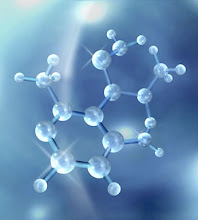Born in 1965 in Beijing, Liu Wei was one of the major artists associated with the Cynical Realism (Wanshi xianshizhuyi) movement that emerged post 1989. Earning his degree from the Central Academy of Fine Arts, Beijing in 1989, Liu would go on to create paintings that typified much of the malaise felt post-Tiananmen Incident.
Liu has also participated in the 46th Venice Biennale in 1995, and has had solo exhibitions at the Jack Tilton Gallery in New York, USA in 1999 and the Urs Meile Gallery, Switzerland in 2004. Like his counterpart Fang Lijun, Liu has been perceived as displaying a kind of mischievous humour in his work, exemplifying the skepticism engendered after the brief but idealistic period starting from the end of the Cultural Revolution and leading up to the year 1989. With Deng Xiaoping’s economic and social reforms introduced in the late 1970s, China began opening its doors to new ideas, including capitalistic ideology and western culture. During this period intellectuals challenged past Maoist repressive modes, allowing new ideologies and philosophies to emerge and flourish, which in a sense created a certain air of idealism and freedom to think amongst the population.
With works such as New Generation (1990), Liu exhibits this sense of marked disdain. Using childhood images of himself and his brother as models for the piece, Liu places the children in front of a typical image of Mao. As Francesca Dal Lago notes, Liu plays upon the notion of Mao the icon and Mao the historical figure.(1) By placing the Chairman behind the children in his painting, Liu acknowledges the significance that the leader played in everyday life, yet emphasizes his current status as mere historical figure. No longer taking centre stage, Mao is relegated to the back, demanding acknowledgement of his past influence, but altogether powerless to change the future.
Combining realistic attitudes towards the political and social situation of China with sarcastic mockery of the authorities attempting to establish control, Liu creates a language that defines much of the era’s prevailing sentiment. Using bright colors reminiscent of Cultural Revolution propaganda while relegating the Chairman to background status, Liu chides authority for believing that they can return to the kind of control and nationalist zeal once maintained under Mao. Balancing sarcasm with pragmatism, Liu recognizes the withering effect of the authority’s inconsistent stance and their recent attempts to thwart democratic movements. With the threat of sanctioned imprisonment and persecution still acutely tangible since the Tiananmen Incident, Liu gives the children in New Generation faces older beyond their years. At once resigned to the struggle they face, they nonetheless appear irreverent in attitude as they attempt to displace Mao as centre of attention on canvas and in daily life.
PROFILE
1965
• Beijing
EDUCATION
1989
• BA Central Academy of Fine Arts, Beijing
His Selected Exhibitions
1. The 4th Seoul International Media Art Biennale, Seoul Museum of Art, Seoul, Korea
2. CHINAJAPANKOREA, Art from Japan, China and Korea, Fondazione Sandretto Re Rebaodengo
3. 51 Venice Biennale, Venice, Italy
4. Mahjong, Bern, Switzerland
5. First Nanjing Triennial, Nanjing, China
6. Shanghai Biennale techniques of the visible, Shanghai, China
7. Exhibitions Between Past and Future: New Photography and Video from China
8. International Center of Photography, Asia Society, New York City, United States
9. Regeneration Charles Cowles Gallery, New York City, United States
Original source: http://biginternetarticles.com/find-liu-wei-biography-and-artwork-at-sa-77190.php
Subscribe to:
Post Comments (Atom)

No comments:
Post a Comment